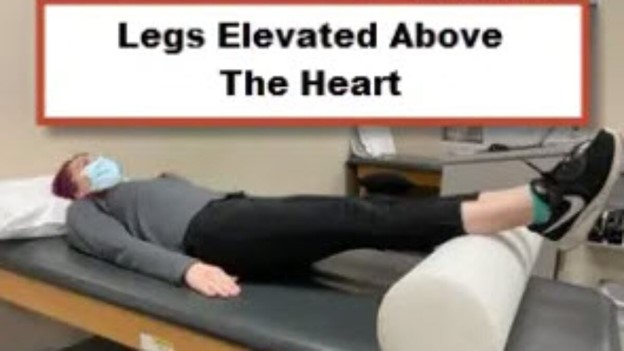A nurse is reinforcing teaching with the parents of a 10-week-old infant who is scheduled for surgical repair of a cleft lip. Which of the following pieces of information should the nurse include?
"You should give your baby a pacifier when she cries."
"Your baby will be placed in elbow restraints following surgery."
"Your baby cannot have anything by mouth until 2 hours after surgery."
"You should position your baby on her abdomen following surgery.".
The Correct Answer is B
The correct answer is choice b. “Your baby will be placed in elbow restraints following surgery.”
Choice A rationale:
Giving a pacifier to a baby after cleft lip surgery is generally not recommended as it can put pressure on the surgical site and potentially disrupt the healing process.
Choice B rationale:
Elbow restraints are used to prevent the infant from touching or rubbing the surgical site, which helps in protecting the stitches and ensuring proper healing.
Choice C rationale:
Infants are usually allowed to have fluids by mouth soon after surgery, often within a few hours, to ensure they stay hydrated and to monitor their ability to swallow.
Choice D rationale:
Positioning the baby on their abdomen is not recommended as it can put pressure on the surgical site. Instead, the baby should be positioned on their back or side to avoid any pressure on the repaired lip
Nursing Test Bank
Naxlex Comprehensive Predictor Exams
Related Questions
Correct Answer is C
Explanation
Choice A rationale:
Encouraging active range of motion of the extremity is not recommended during the first 12 to 24 hours after a sprained wrist. Early movement can potentially worsen the swelling and delay the healing process.
Choice B rationale:
Applying warm compresses to the extremity is not the best choice to minimize swelling in the initial 12 to 24 hours after a sprained wrist. Heat can actually increase blood flow and promote more swelling in the injured area.
Choice C rationale:
Elevating the extremity above the level of the heart is the correct choice for minimizing swelling in the first 12 to 24 hours after a sprained wrist. Elevating the injured area helps to reduce blood flow to the area, which in turn decreases swelling and promotes healing.

Choice D rationale:
Wrapping the extremity loosely with an elastic bandage might be beneficial for providing support, but it's not the primary intervention for minimizing swelling in the first 12 to 24 hours after a sprained wrist. Elevation is more effective for reducing swelling during this initial period.
Correct Answer is D
Explanation
The correct answer is choice D, wooden building blocks.
Choice A rationale:
Colored paper and safety scissors are not appropriate for an 18-month-old child due to safety concerns. At this age, children are still developing fine motor skills and coordination, and the use of scissors, even safety ones, poses a risk of injury.
Choice B rationale:
Stringing beads is not suitable for an 18-month-old child as it requires more advanced fine motor skills and could pose a choking hazard. Children at this age are still prone to exploring objects by putting them in their mouths.
Choice C rationale:
Alphabet flash cards are not the best choice for an 18-month-old child with pneumonia. While flash cards can be educational, they are more suited for older children who are beginning to learn letters and words. At 18 months, play should focus on sensory and motor skill development rather than academic learning.
Choice D rationale:
Wooden building blocks are the most appropriate choice for an 18-month-old child. They encourage play that is developmentally supportive, promoting fine motor skills and creativity. Blocks can be easily handled by small hands, and there is no risk of injury or choking. Additionally, building and knocking down block towers can provide a sense of accomplishment and enjoyment for the child.
Whether you are a student looking to ace your exams or a practicing nurse seeking to enhance your expertise , our nursing education contents will empower you with the confidence and competence to make a difference in the lives of patients and become a respected leader in the healthcare field.
Visit Naxlex, invest in your future and unlock endless possibilities with our unparalleled nursing education contents today
Report Wrong Answer on the Current Question
Do you disagree with the answer? If yes, what is your expected answer? Explain.
Kindly be descriptive with the issue you are facing.
